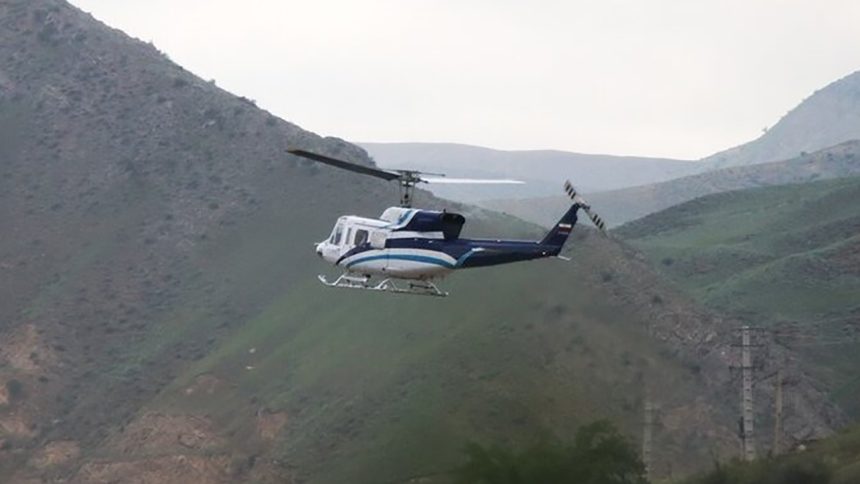A preliminary probe into the crash that killed the Iranian President Ebrahim Raisi has completely ruled out foul play, according to reports from Iran.
The Bell 212 helicopter carrying late Iranian President Ebrahim Raisi, crashed owing to the poor visibility, bad weather conditions and exceeding its prescribed passenger capacity by two persons, security officials were quoted by Iranian semi-official news agencies. A preliminary report also ruled out foul play or attacks.
Reports quoted Fars news agency, which cited unnamed sources saying “the investigation into Raisi’s helicopter crash has been completed… there is complete certainty that what happened was an accident.” However, Reuters later quoted the Armed Forces General Staff who defined the report about the investigation as “completely false.”
Raisi, along with foreign minister Hossein Amir-Abdollahian and other officials were killed in the crash on May 19, 2024. The Bell 212 crashed in the foggy and mountainous regions near Tabriz in northwestern Iran near Azerbaijan.
The crash
Along with Raisi, Amir-Abdollahian and three flight crew, the helicopter was carrying the Governor-General of East Azerbaijan Malek Rahmati, the representative of the Supreme Leader for the region Mohammad Ali Ale-Hashem and the head of the President’s security team, totalling eight persons.
Justice for Raisi
Iranian Security Services have now Completed their Investigation into the Helicopter Crash which caused the Death of Former President Ebrahim Raisi in May, with it determined that the Crash was not the result of any Malicious Action but instead an Accident… pic.twitter.com/7oq1oCS0Jv
— MEHMET VEFA DAG (@AFRICANDEMOC) August 21, 2024
Following the crash, the Financial Times, quoting a study by Cirium, said the 1960s-era Bell 212 might have been acquired by the Iranian Air Force in 1994, based on its serial number C-9207. It is reported that the average age of the active aircraft in Iran’s passenger fleet is almost 28 years, more than double the global average. Some reports indicated that the Bell 212 might have been transferred from utility military to VIP transport role.
US sanctions and the long-term unsustainability of sourcing aerospace components from the gray market and smuggling rings for its fleet of Western-origin aircraft, acquired before the Islamic Revolution of 1979, had greatly hurt Iran’s civilian and military aviation sector. Interestingly, former hardliner Presidents Mahmoud Ahmadinejad and Abolhasan Banisadr both survived their own helicopter crashes while in office.
Weather and overload
A preliminary probe immediately after the mishap had ruled out foul play or sabotage. Iran International said about this initial investigation that “no evidence of foul play or an attack was found.” The report also “noted that only 69 seconds elapsed between the last contact with the helicopter pilots and the crash, with no emergency status declared.”
Iran has completed its investigation into the helicopter crash involving President Raisi.
According to the state-run Fars news agency, the incident was determined to be an unfortunate accident:
The helicopter was overloaded, preventing it from reaching the required altitude,… pic.twitter.com/EbGg0jHyq5
— Venik (@venik44) August 22, 2024
Shedding further light on the weather and overload, Tehran Times, citing unidentified officials in the country’s aviation sector, said that the meteorological department had provided timely updates on the “necessary weather information the night prior to the planned flight,” and that the helicopter pilots and crew were “instructed to complete the flight before 1 p.m.”
This is when “two factors contributed to the crash.” The first was a “delay” in the flight’s departure owing to “Raisi’s meetings,” by when the “weather conditions deteriorated.” The other was the “helicopter’s excessive weight, which was exacerbated by the atmospheric pressure in the region.”
“When the pilot encountered a dense fog and attempted to adjust the helicopter’s altitude, the aircraft lacked the necessary power,” owing to the two additional passengers. Eventually, the “limited visibility due to the fog ultimately led to a collision with a mountain.”
‘All other protocols followed’
Consistent with standard security protocols for presidential travel, “two different types of helicopters were used” and “these helicopters were deliberately not equipped with GPS systems,” to minimize the “risk of tracking or interference,” said the reports. The flight leaders were also “switched during both the outbound and return legs,” mitigating “any potential sabotage attempts.”
“Extensive tests” were also conducted “and no traces of (chemical) substances were found,” which “dismisses any speculation” on the role of “chemical agents.”
The source revealed that “30,000 individuals” were “subjected to rigorous security and intelligence” checks to investigate sabotage.
The Aviationist had reported the acute airworthiness and safety issues in Iran’s aging civil aviation fleet, and how the crash occurred at a time when Tehran was on its way to purchase 12 units of the Mi-17V5 or Mi-171 emergency search and rescue helicopters in a $500 million deal with Russia that was not officially announced by either party.









